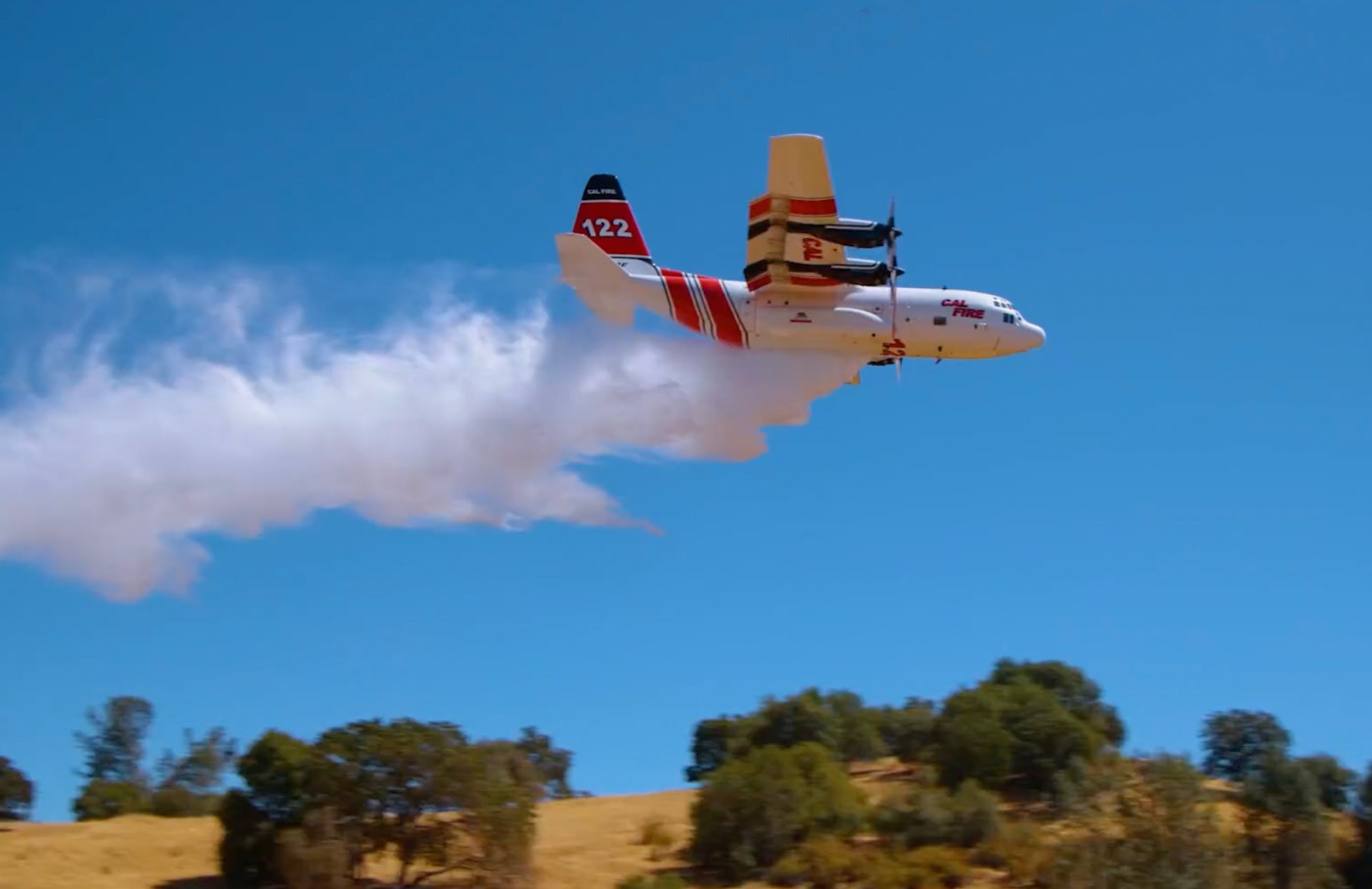Just 3 weeks after being added to the Cal Fire fleet, a converted military air tanker has taken to the skies on more than a dozen occasions throughout the state, officials said.
The retrofitted C-130 Hercules, a 1985 model as a U.S. Coast Guard transport plane, was converted into an air tanker in order to drop retardant on wildfires in California. The federal government plans to transfer six more of the planes to Cal Fire at no cost, with another expected to be ready for service in Fresno by the end of this year and a third scheduled for Cal Fire’s Ramona air base in San Diego County in early 2025.
Linnea Edmeier, aviation communications officer with Cal Fire, said the plane has more capacity and longer range than other Cal Fire aircraft, and these assets will be used “to shore up (their) entire fleet.” Edmeier said the aircraft was needed as a statewide resource “as we continue to see the increase in fire activity.”
Edmeier said, “It’s part of the operational need to have the ability to have the different aircraft that are capable for different missions that makes the fleet versatile.”
California officials have added a C-130 Hercules cargo plane to the firefighting fleet of the California Department of Forestry and Fire Protection, the state’s primary firefighting agency. (Courtesy Cal Fire/TNS)
Since going into service on Aug. 26, the plane has been used to combat several fires, including the Two and Cougar Fires in Sonoma County, the Robert Fire in Solano County, and the Quincy Fire in Butte County.
This first C-130 to be deployed is a 1985 model cargo plane, the type that has been used by the military since the 1950s to move soldiers, cargo, tanks and more around the world. The plane was retrofitted to carry 4,000 gallons of fire retardant — more than triple the capacity of other Cal Fire tankers, giving it an ability to create huge breaks as flames ravage grassland and other wild areas.
Related Articles
Homeowners join consumer advocates in assailing California insurance reforms
Large brush fire breaks out at busy San Jose intersection
Man pleads not guilty to setting a fire that exploded into a massive Line Fire
Google to invest in satellites and AI to better detect wildfires
Threats to life, property prioritized for resources in 3 Southern California wildfires
Edmeier also said the plane can fly at higher altitudes, flies faster, and is fuel efficientcompared to some other firefighting aircraft; she highlighted cost efficiency as an important factor due to firefighters having to work more hours as fire seasonhas intensified in recent years.
Cal Fire obtained the C-130 in January after years of waiting caused by delays from the COVID pandemic and the lengthy federal process for advertising, reviewing and awarding contracts for the planes. It took between six and eight months for the plane to be converted into an air tanker, at a cost of $6.5 million for each plane.
A screen grab from the video shows the Cal Fire crew of a C-130 Hercules practicing water drops. The state’s primary firefighting agency has added C-130s to its fleet. (Courtesy Cal Fire)
A specialized team worked in phases to make the necessary changes to the plane, installing the tank, replacing structural elements to secure the wings to the fuselage, taking out unneeded machinery and installing the hydraulic system that opens the doors to let the retardant out from the belly of the plane.
“These are human hands doing these very specialized small movements day after day,” Edmeier said.
The planes that Cal Fire acquires will be retrofitted one by one into air tankers, with the technicians working on the plane in phases.
Staff writer Paul Rogers contributed to this report.












